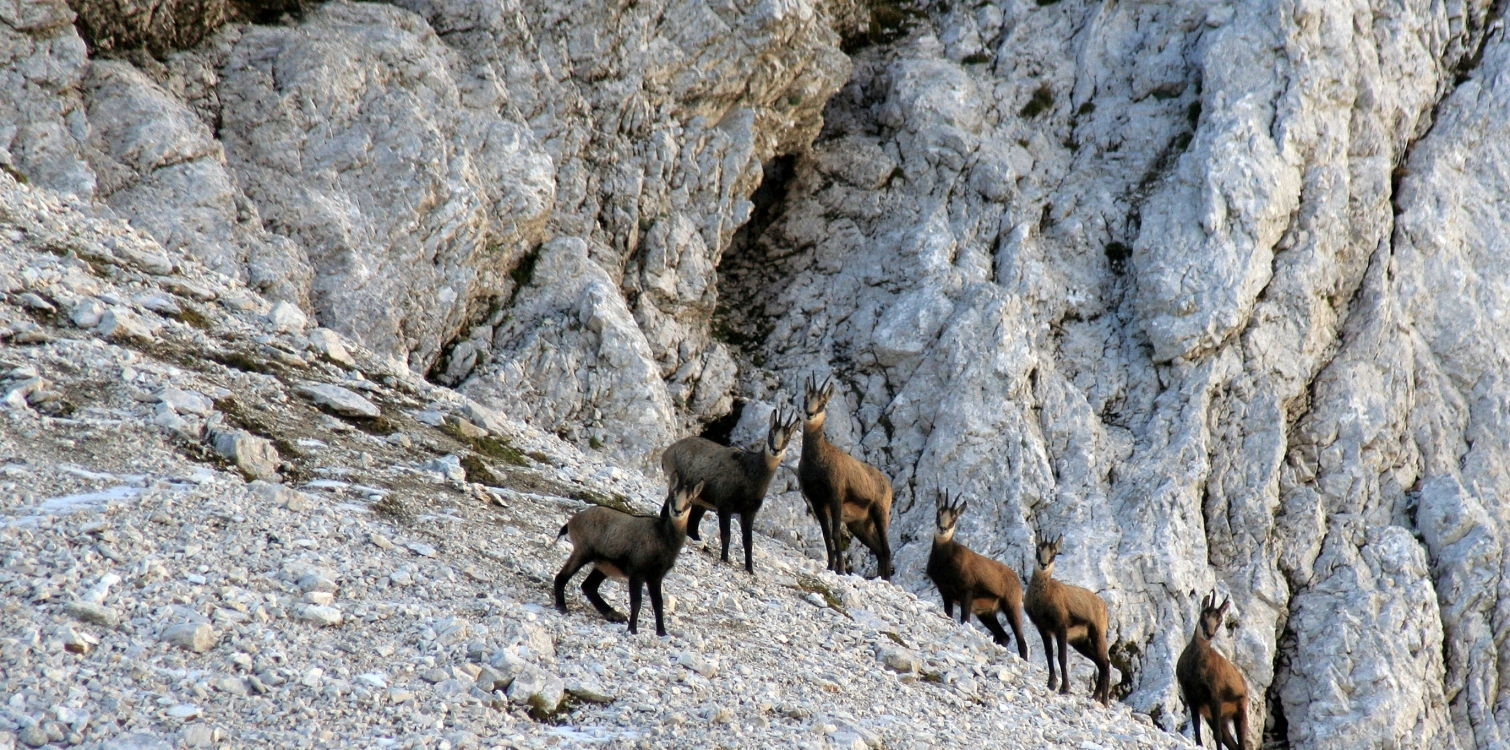Quiet zones are designated by the Regulation on the Triglav National Park Management Plan 2016-2025 (Official Gazette of the Republic of Slovenia No 34/16) as areas of outstanding importance for the protection of fauna and flora species and habitat types, where visitation (walking off the beaten track, mountaineering, hiking) and various activities (air transport, touring, skiing, paragliding, paragliding, photoloving, cycling, forestry, agriculture) are adapted in time and space to minimise disturbance.
In the quiet zones, measures are foreseen for a variety of activities, from forestry, grazing, motor traffic, helicopter overflights and various recreational activities.
Possible measures include:
- Prohibition,
- Diversion;
- and time restrictions.
They are defined on the basis of important annual and winter habitats for Chamois, Black Grouse and Capercaillie, and areas of importance for Rock Ptarmigan, Golden Eagle and Soča Trout. In addition to these species, the Pokljuka Bogs are also identified as quiet areas. According to current knowledge and understanding of the ecology of species and ecosystems, the quiet areas in the Park represent an important measure for the protection and conservation of the most vulnerable and sensitive species and habitat types. At the same time, the quiet areas also protect Natura 2000 species and habitat types, which are required by European legislation (Habitats Directive and Birds Directive) to be maintained in a favourable condition.
In the future, it is planned to designate quiet zones for other species if monitoring shows that this is necessary.

Chamois

Black grouse

Capercallie

Golden eagle

Rock ptarmigan

Soča trout
The management plan foresees a gradual implementation of the quiet zones, which will include regular monitoring of the status of the species for which the quiet zone has been identified, coordination with all stakeholders and then marking the area in the field and appropriate monitoring. Priority for enforcement will be given to areas under greater pressure (e.g. Pokljuka).
Until the implementation of the quiet zones, the adaptations as written are valid as guidelines. As this is a system for the protection of living nature, the boundaries of the areas drawn may be subject to further changes.
The implementation of the Pokljuka, Mangrt saddle and Vitranc quiet zones is being carried out within the framework of the Vrh Julijcev project. In autumn 2021, 11 new gates were installed on forest roads in Pokljuka as one of the measures to ensure peace in the quiet areas. More information on the progress of the project can be found on the project website.

